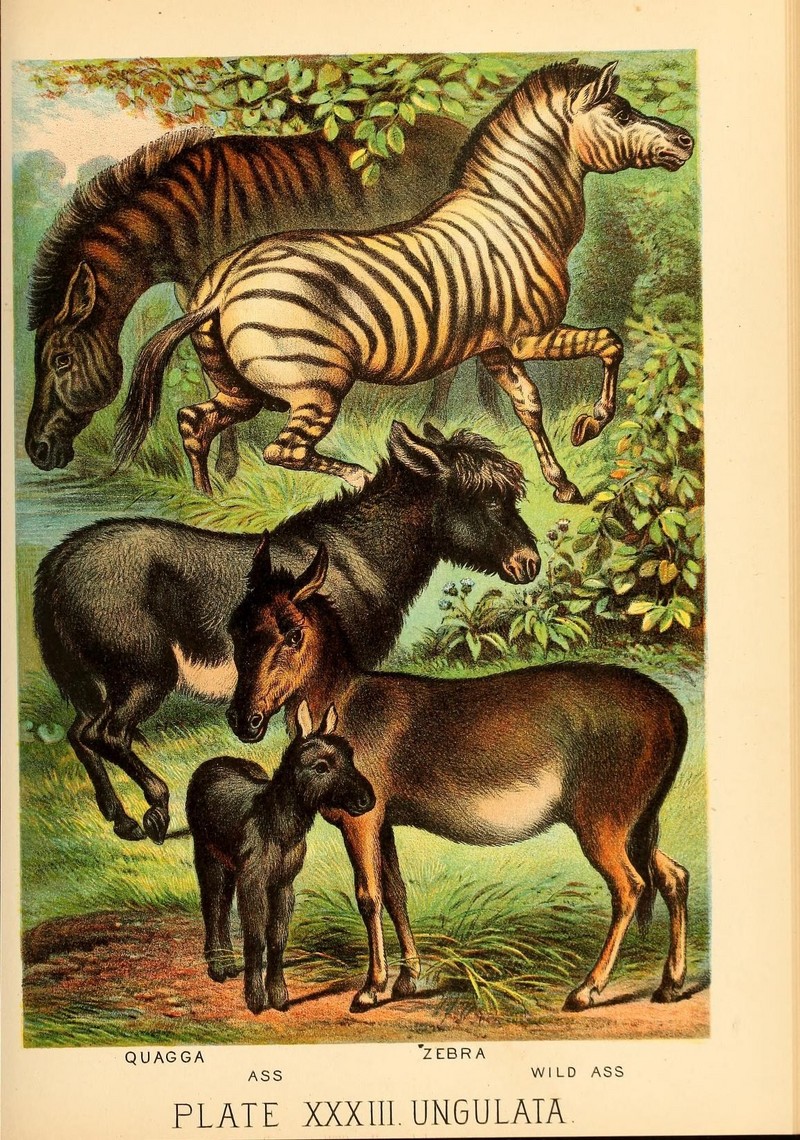quagga (Equus quagga quagga), zebra, donkey or ass (Equus africanus asinus), Asiatic wild ass, onager (Equus hemionus) QUAGGA
ZEBRA
ASS
WILD ASS
PLATE XXXIII. UNGULATA
Date 1880
Source http://www.flickr.com/photos/biodivlibrary/7268661638
Author Hugh Craig, ed.
Full title Johnson's household book of nature, containing full and interesting descriptions of the animal kingdom, based upon the writings of the eminent naturalists, Audubon, Wallace, Brehm, Wood and others.
Source: https://commons.wikimedia.org/wiki/File:Johnson%27s_household_book_of_nature_(Plate_XXXIII)_(7268661638).jpg
The quagga (Equus quagga quagga) is an extinct subspecies of plains zebra that lived in South Africa until the 19th century. It was long thought to be a distinct species, but genetic studies have shown it to be the southernmost subspecies of plains zebra. It is considered particularly close to Burchell's zebra. Its name was derived from its call, which sounded like "kwa-ha-ha".
Zebras are several species of African equids (horse family) united by their distinctive black and white striped coats. Their stripes come in different patterns, unique to each individual. They are generally social animals that live in small harems to large herds. Unlike their closest relatives, horses and donkeys, zebras have never been truly domesticated. There are three species of zebras: the plains zebra (Equus quagga), the Grévy's zebra (Equus grevyi) and the mountain zebra (Equus zebra).
The donkey or ass (Equus africanus asinus) is a domesticated member of the horse family, Equidae. The wild ancestor of the donkey is the African wild ass, Equus africanus. The donkey has been used as a working animal for at least 5000 years.
The onager or hemione or Asiatic wild ass (Equus hemionus) is a species of the family Equidae (horse family) native to Asia. Onagers live in deserts and other arid regions of Iran, Pakistan, India, and Mongolia, including in Central Asian hot and cold deserts of Kazakhstan, Uzbekistan, Turkmenistan, and China.
